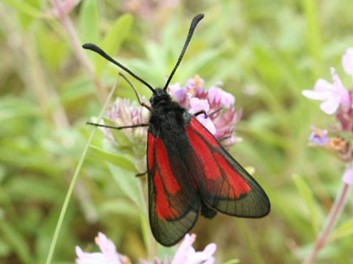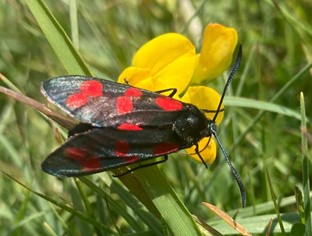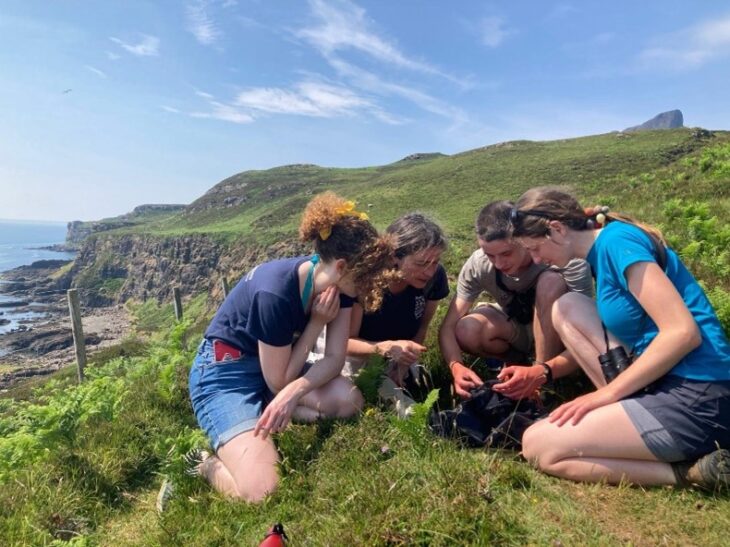Transparent burnets on Isle of Eigg
Maya Saunders, a volunteer on the Isle of Eigg shares her butterfly and moth survey work to save some of our species who live on our western coasts.
The transparent burnet (Zygaena purpuralis) is one of several rare burnet moths found on the West Coast of Scotland and the Isle of Eigg is lucky enough to host a population. This colourful, day-flying moth is one of 37 priority species which the Species on the Edge project aims to conserve. The project is a partnership between NatureScot and 7 conservation charities. One of the project aims is to collect data to help provide a better understanding of the species’ ecology and population trends.

As part of my 2-month volunteering placement on Eigg, I helped survey an area to fulfil this aim of the project. Transparent burnets are very picky with their habitat requirements, being restricted to steep, south facing slopes under cliffs which have plenty of their larval food plant, wild thyme (Thymus serpyllum). We headed out on a sunny afternoon to one such habitat on Eigg where the moth had been sighted before.
However, we had to be careful not to mix up the transparent burnet with a similarly coloured, more common species: the six-spot burnet. It also frequents the same area, making it difficult to differentiate the species in flight. Luckily, we brought a butterfly net with us to allow for a closer inspection.

Ten minutes into the first survey, we saw our first flash of black and red. Was it the transparent or the six-spot burnet? We all peered excitedly through the net and upon seeing the characteristic three crimson streaks on each forewing and slightly translucent wings, we could confirm our first transparent burnet. On this first survey, I expected to see a couple of individuals at most – it is a rare species after all! Over the next half hour, we went on to see an astounding total of thirty three transparent burnets. The moths were so tame that they happily crawled onto our hands and it was great seeing them so close up. In the following days, we also had sightings in other areas across the island. This is amazing news for the population on Eigg.

Alongside the ranger and volunteers, we established a transect on this site which will be surveyed over June and July every year and will help monitor long term changes in the population. We also set up a habitat survey to find out more about the specific habitat requirements of the moth. This will produce valuable data for the Species on the Edge project and help inform future management actions to conserve the species.
Help protect Scotland’s wildlife
Our work to save Scotland’s wildlife is made possible thanks to the generosity of our members and supporters.
Join today from just £3 a month to help protect the species you love.
Preface
Maya Saunders, a volunteer on the Isle of Eigg shares her butterfly and moth survey work to save some of our species who live on our western coasts. The transparent …
